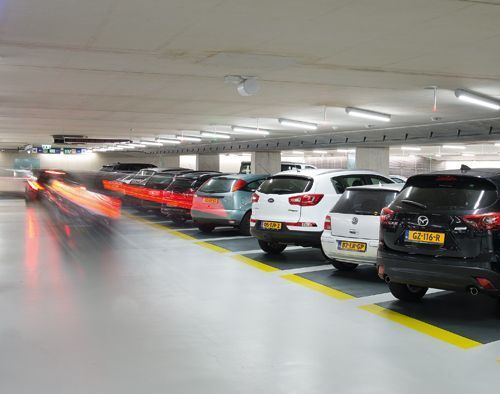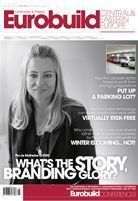Put up a parking lot?
Investment & Finance
Imagine that the number of cars parking in the centre of Warsaw could be slashed by half from one day to the next. Pedestrians could then stroll down wide pavements instead of squeezing past vehicles. There would be more space for greenery, cycle paths and restaurant gardens. The construction of underground car parks would appear to be one way to make this dream real. So why is it not happening? The main reason is the lack of interest from investors.
Good business in Europe
Car parks are an alternative class of investment property. According to Alice Marwick of Savills’ European research department, transactions involving the sale of car parks totalled EUR 380 mln in Europe in the last year alone. This estimate does not include large corporate acquisitions, such as the purchase of Spanish operator Empark by Australian group Macquarie, which could amount to USD 1 bln (the price has not been disclosed). Specialised Dutch parking investor Bouwfonds European Real Estate Parking Fund III also bought 17 properties in Germany, France, the UK, the Netherlands and Spain last year for EUR 250 mln. Other notable transactions from recent years include the 2014 purchase of a 39 pct stake in Interparking by the Canada Pension Plan Investment Board, which paid USD 546 mln to Belgian insurer AG Real Estate. In 2016 American hedge fund Davidson Kempner acquired 88 car parks of the largest British chain, National Car Parks (NCP), for half a billion pounds from the Royal Bank of Scotland and Blackstone.
So far the Polish car park market has been following that of Europe in a general way and rather slowly, to put it mildly. There have only been a few examples of large transactions other than the one made last year by a fund managed by Lords LB Asset Management of Lithuania. The company bought the City Parking Group, which manages 165,000 parking spaces in Poland, the Czech Republic and Slovakia, among other countries. “It’s possible that car parks located in Poland will soon become an attractive investment product for funds interested in diversifying their portfolios, not only in terms of sectors but also territories,” suggests Małgorzata Lińska-Bator, the director of the financing enterprises and valuations department at Savills. However, the lack of investment product is the main problem at this point.
Difficulties kick-starting projects
Warsaw’s attempts at building the car parks it needs stand out as an example of how difficult such schemes in Poland can be. Since 2011 the city has been trying to find parties willing to develop a network of underground car parks in a public-private partnership. A concession would be provided for the companies to design, build and finance the construction of the car parks and then manage them for a few decades, during which time they would receive all the income from the motorists using them. In 2012 the city invited investors to submit bids for seven central city centre locations: under pl. Powstańców Warszawy, pl. Trzech Krzyży, ul. Emili Plater, pl. Konstytucji, pl. Bankowy, pl. Mariensztat and Wybrzeże Gdańskie, as well as one in the inner suburbs – at pl. Wilsona in Żoliborz. These were intended to offer between app. 2,000 and 4,000 spaces. But as all the procedures have dragged on, so far none of the schemes have borne fruit. Parties have yet to emerge that would be ready to undertake these projects under market conditions. Companies in the sector complain that the costs are too high in relation to the expected revenue. “The construction of one space in an underground car park costs between PLN 100,000 and PLN 140,000. Even assuming a long payback period of more than 30 years, the price for parking would have to be PLN 6–8 per hour in order to make the investment profitable. Charging this sort of fee for a parking space is unrealistic if cars can be parked for PLN 3 per hour or less on a nearby street,” explains Maciej Mosiej, the director of operations and a board member at Interparking Poland as well as the president of the Polish Parking Industry Organisation.
If such a business is unviable due to the poor revenue of parking spaces, investors expect the city to guarantee that as the public partner it would fill the gap. They would also appreciate the removal of parking spaces on the streets in the vicinity of the car park – e.g. within 500–600 metres of pl. Teatralny. This, however, is unacceptable to the Warsaw city authorities. Only two of the eight locations that were chosen a few years ago are still included in the overall scheme (at pl. Powstańców and pl. Wilsona), and the city council has announced another round of negotiations for the second half of this year. Smaller and larger concessions have so far managed to build car parks in Poznań, Wrocław and Kraków, while such tenders in Gdańsk and Łódź are still in progress.
 “Even assuming a long payback period of more than 30 years, the price for parking would have to be PLN 6–8 per hour
“Even assuming a long payback period of more than 30 years, the price for parking would have to be PLN 6–8 per hourin order for the investment to be profitable,” explains Maciej Mosiej, the director of operations at Interparking Poland
Will the city pay?
In mid-2017, Warsaw councillors, apparently tired of this deadlock, demanded that the mayor of the city transfer PLN 200 mln to the municipal parking programme. This time new facilities are to be built using public money under school playgrounds in the city’s Wola, Mokotów and Ochota districts as well as in seven other locations. A total of ten car parks with about 2,000 spaces are to be constructed. Urban campaigners, however, have reacted negatively to this news. The Miasto jest Nasze [The City is Ours] association considered the plan a waste of public money. As the president of the association, Jan Mencwel, explains, such a scheme is PR and mere window-dressing. With more than 500,000 cars entering Warsaw every day, the construction of 2,000 spaces at PLN 100,000 per space will not change anything. “Without the public transportation systems acceptable to white collar workers, the pavements will continue to be clogged up with parked cars,” he cautions. Therefore the association would prefer money to be spent on public transport and a network of Park and Ride (P+R) car parks on the outskirts of cities. According to the association, this would have real benefits because it would reduce the car traffic in city centres. In the last decade Warsaw has been using EU funds to invest in a network of P+R car parks. However, private investors are not interested in these projects because they generate even lower revenue since they are free of charge for motorists transferring onto public transport.
So who will cough up the cash?
If the public side won’t contribute to city centre car parks and private investors don’t want to do this either (and they won’t because they want to make money instead of just spending it), the only possibility left is that the costs will be transferred onto the motorists. This is the most likely scenario as the Ministry of Development aims to give local authorities the power to raise the fees in paid parking zones by up to even as much as PLN 9 per hour (the maximum rate has been capped off at about PLN 3 by the Road Traffic Act until now). Underground car parks could suddenly start to seem more attractive to motorists if the fees for using them were not much higher than on those on the street. It remains unknown whether and to what extent local authorities will take advantage of this opportunity, but the lifting of the cap would also increase their revenue from paid parking zones (in 2017 Warsaw raked in PLN 95 mln from this). Of course, a three-fold increase for street parking is not going to make local councils popular with motorists, but according to the president of the Polish Parking Industry Organisation such changes are inevitable if we want to keep the streets usable. “There is a popular notion that parking on the street is cost-free. But this is not true. A place on a street has a cost, just like any other commodity. The costs include the land tax, the maintenance and the cleaning. Raising the fees for street parking is just one of the measures we are going to have to take,” he insists. However, the changes should be even more far-reaching and include reducing the number of parking spaces on the streets, introducing parking parallel to the line of the pavement rather than diagonally into it, as well as reducing the attractiveness of the fees for residents, who in some cities currently pay just PLN 30 a year. All these changes would increase the rotation of cars on the streets and help to make space more available. This would also increase the demand for already existing public underground car parks – which are now mainly located in shopping centres and public buildings. According to the Miasto jest Nasze association, there are as up to 11,000 of this kind of public parking space in Warsaw city centre – but motorists still prefer to park on the street. There would be even more spaces if the car parks under office buildings and residential buildings were included. Unfortunately, these are generally unavailable to external users. However, the operational director of the Interparking chain points out that owners are increasingly looking at the possibility of making them accessible to the public. As he claims, in the real estate sector today there is often an excess of spaces resulting from the parking quotas imposed in the spatial planning. Tenants do not always use these spaces and certainly not around the clock. “Maybe some people would prefer to pay a little less and we could sell night subscriptions to others or make the car parks available to people going to the cinema or restaurant. As a parking operator with the right technological and general know-how, we can help owners manage and at the same time increase the income from their car parks,” claims Maciej Mosiej. Unfortunately, it’s unlikely that this will also affect the investment market. “The owners of shopping centres or office buildings are unlikely to separate the ownership of the car park from the property of the building under which it is located. Therefore it is difficult to imagine that many new car parks are going to appear on the investment market as a result of this,” admits Maciej Mosiej.





















































